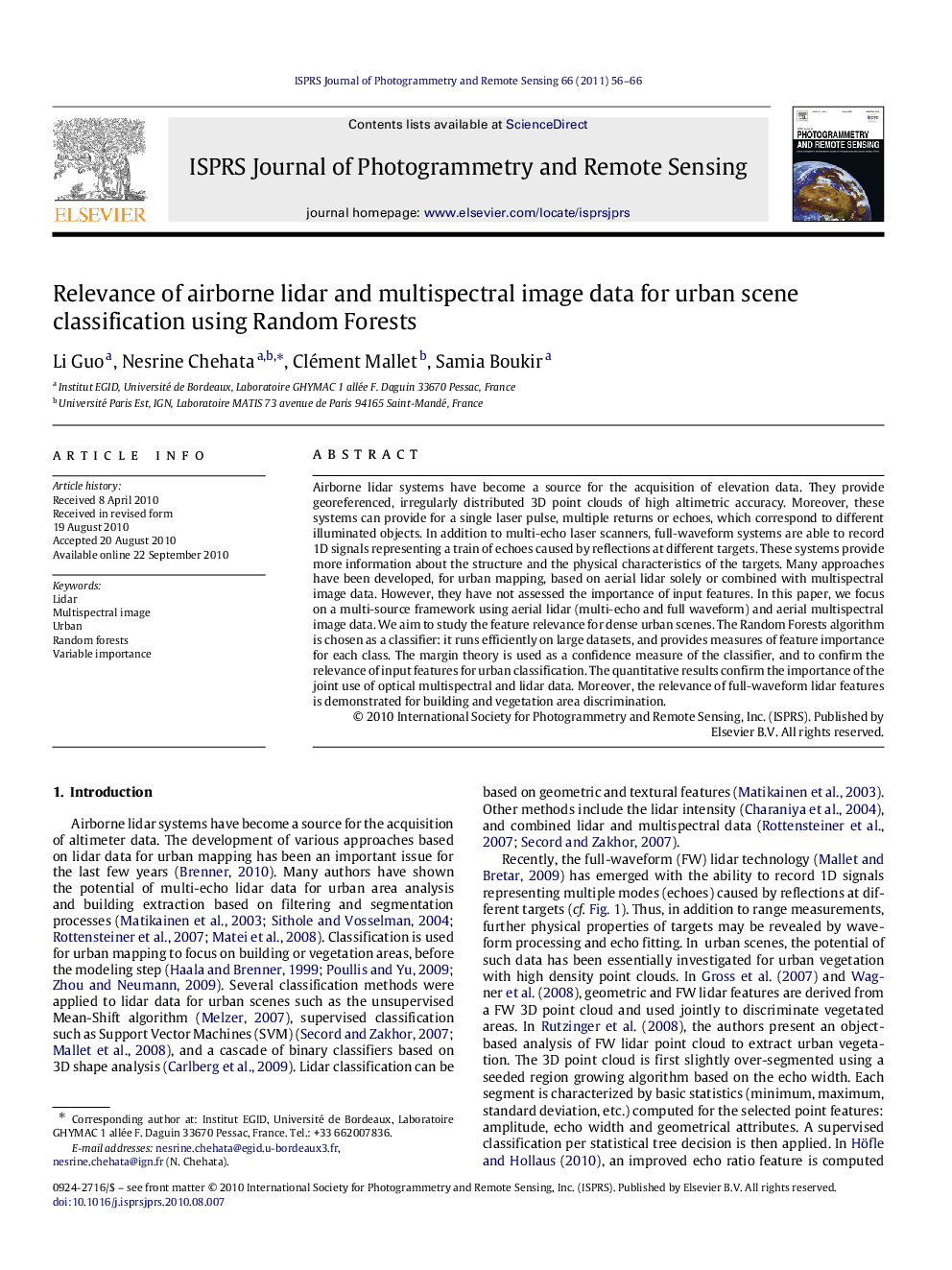| Article ID | Journal | Published Year | Pages | File Type |
|---|---|---|---|---|
| 557387 | ISPRS Journal of Photogrammetry and Remote Sensing | 2011 | 11 Pages |
Airborne lidar systems have become a source for the acquisition of elevation data. They provide georeferenced, irregularly distributed 3D point clouds of high altimetric accuracy. Moreover, these systems can provide for a single laser pulse, multiple returns or echoes, which correspond to different illuminated objects. In addition to multi-echo laser scanners, full-waveform systems are able to record 1D signals representing a train of echoes caused by reflections at different targets. These systems provide more information about the structure and the physical characteristics of the targets. Many approaches have been developed, for urban mapping, based on aerial lidar solely or combined with multispectral image data. However, they have not assessed the importance of input features. In this paper, we focus on a multi-source framework using aerial lidar (multi-echo and full waveform) and aerial multispectral image data. We aim to study the feature relevance for dense urban scenes. The Random Forests algorithm is chosen as a classifier: it runs efficiently on large datasets, and provides measures of feature importance for each class. The margin theory is used as a confidence measure of the classifier, and to confirm the relevance of input features for urban classification. The quantitative results confirm the importance of the joint use of optical multispectral and lidar data. Moreover, the relevance of full-waveform lidar features is demonstrated for building and vegetation area discrimination.
